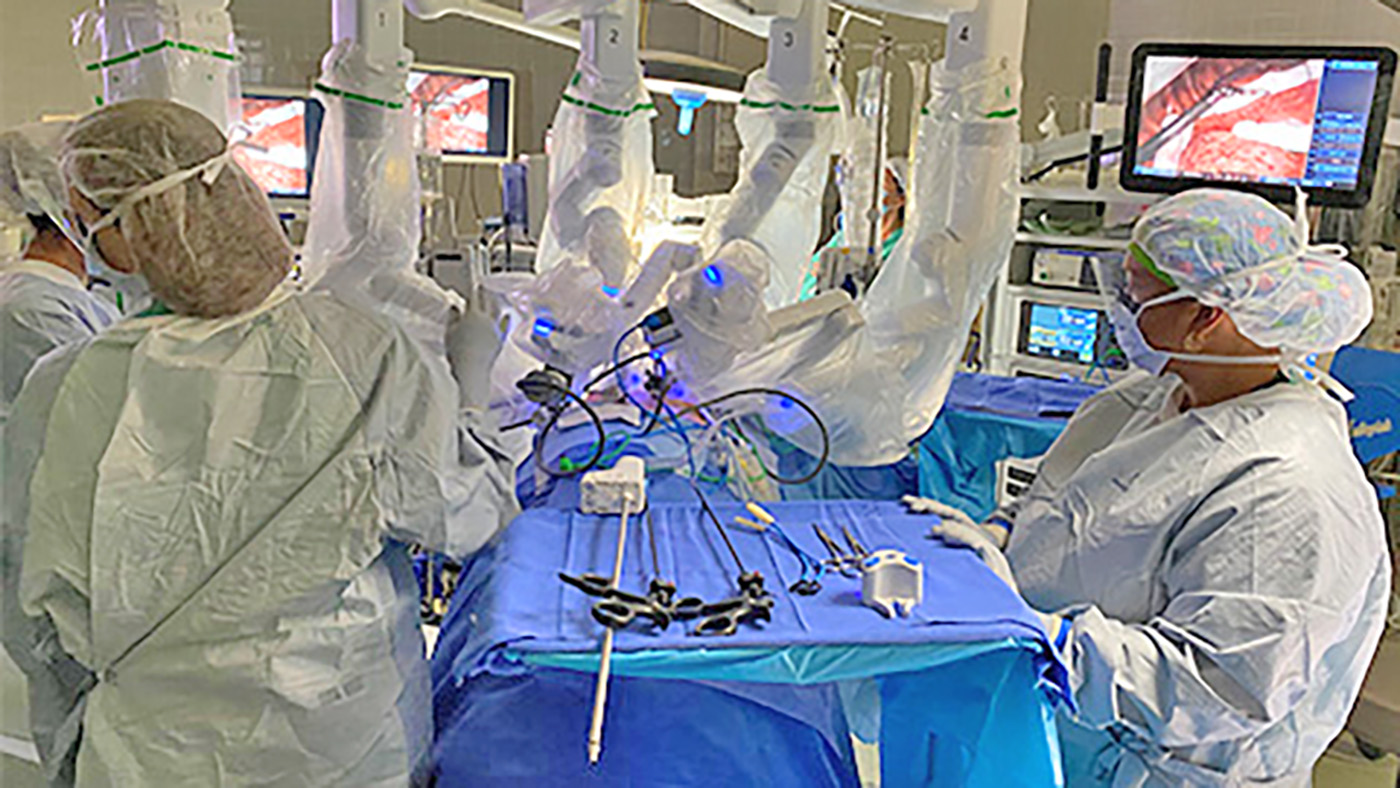Columbia VA’s robotic surgery teams recently completed its 800th robotic surgery, and the numbers are increasing every day. The teams are on schedule to hit 1,000 by the end of the year.
The hospital started using the robotic surgical system in January 2020 for general and thoracic surgeries. Orthopedic surgeries were added in September 2023 and gynecological surgeries in October 2023. There are approximately 22-25 surgeries performed each month.
“Because robotic surgery is more precise, there is less trauma to the soft tissue,” said Dr. Nael Alghothani, acting chief of surgery. “Although the surgery may take longer, the effects afterwards are minimal, which results in less pain after the surgery, less time for recovery and shorter rehab.”
ROSA for knee surgeries
The teams make that possible with the Da Vinci XI robotic surgical system for general, thoracic and gynecological surgeries. Additionally, the ortho department started accomplishing knee surgeries in September 2023 with the ROSA, or Robotic Surgical Assistant system.
“We currently use it for knees only,” said Dr. John Chu, chief of orthopedics. “It allows fine tuning in the balancing of the knee prior to any bone cuts with hopes of improved function and longevity of the implants. We are approaching 100 robotic assisted cases, and both the surgeons and patients have been very happy with the results.”
Dr. Ana Rodriguez joined Columbia VA in October 2023 as a Gynecologist/Minimally Invasive Gynecologic Surgeon, and has performed 30 robotic surgeries. “My clinical interests involve the study of both the medical and epidemiological aspects of gynecologic cancer prevention and control, particularly HPV-related diseases and cancer,” Rodriguez said.
Recruiting a urologist
The surgeons who use the robot must complete a formalized credentialing plan, which includes simulation training, hands-on cadaver lab training and case proctoring. They must perform a number of cases over a two-year period to maintain their credentials.
“I think we still have progress to make,” added Alghothani. “We are focusing on recruiting a urologist. Robotic urology surgeries are the standard now.”
What used to require invasive surgery now only needs small paper-clip sized incisions to insert the surgical system. Surgeries that in the past required weeks of recovery now only require a few days.
Topics in this story
More Stories
Nutrition plays an important role in our overall health. Telehealth resources can help you set and achieve your healthy eating goals.
Veterans learn to combine mindfulness with the challenge of climbing.
The program provides physical rehabilitation through telehealth, improving and sustaining physical function for older Veterans.






Had robotic surgery for a hernia at Hines VA hospital over a year. During the surgery unbeknownst to me they removed some kind of growth or tumor in my groin area while doing the surgery. I had to go back to the emergency room two days after the surgery because of the pain. I have an appointment next week with the pain clinic where there going to try injections and possibly surgery to burn the nerves. Would have been better if they were up front about this after the surgery. I don’t even know if whatever growth they removed was even tested for cancer. Would like to know.
I was told I could not get robotic hernia surgery at Kaiser without being intubated, and I have aortic stenosis (moderate). So they are not doing the surgery . Does the VA have a similar protocol?
You forgot to add that laparoscopic/robotic surgeries are the main cause of abdominal adhesions. Do you inform the female patients that you’ll probably also be using a uterine manipulator or do you just wait & see if they have massive PTSD issues afterwards?
High Tech Robotics…Great read